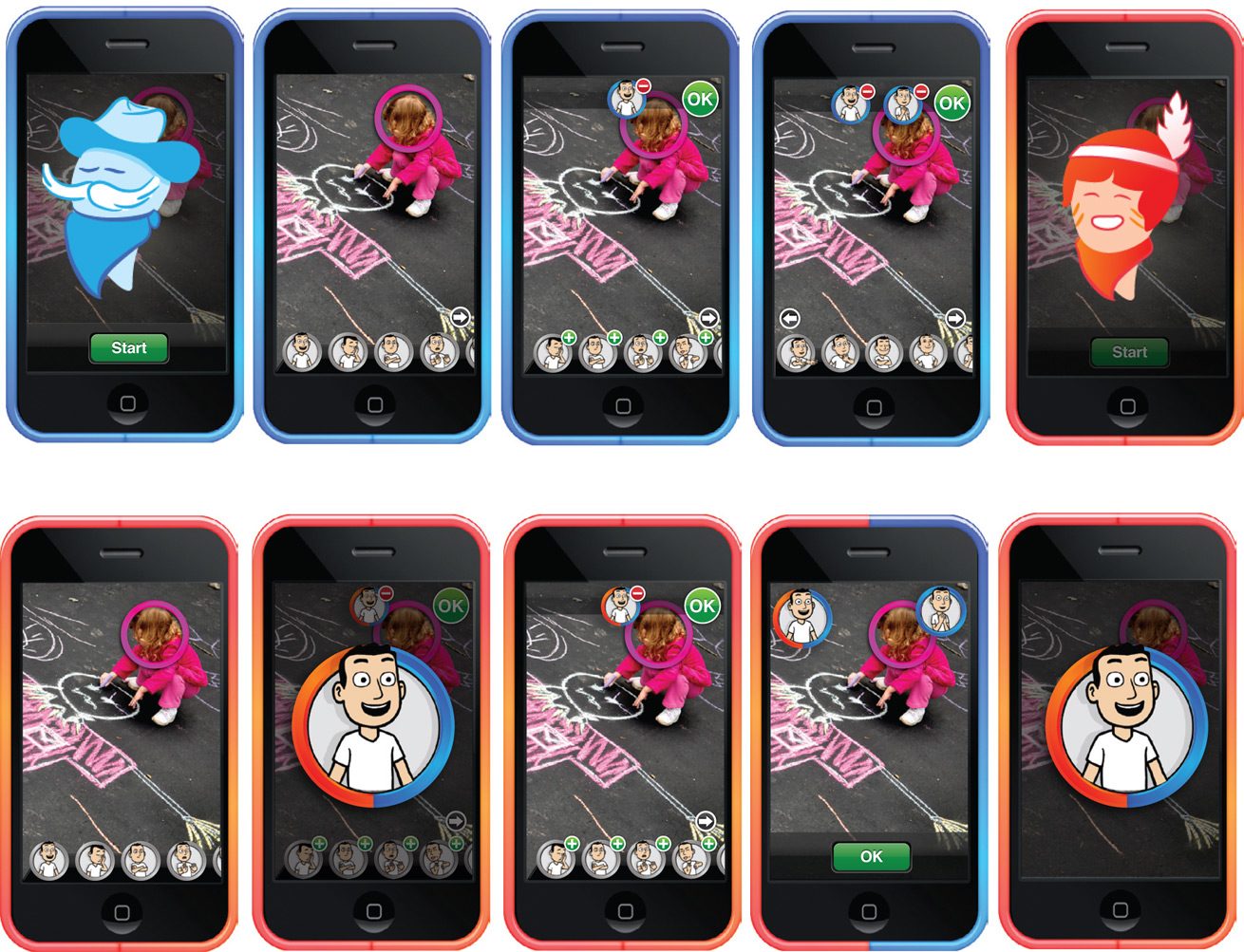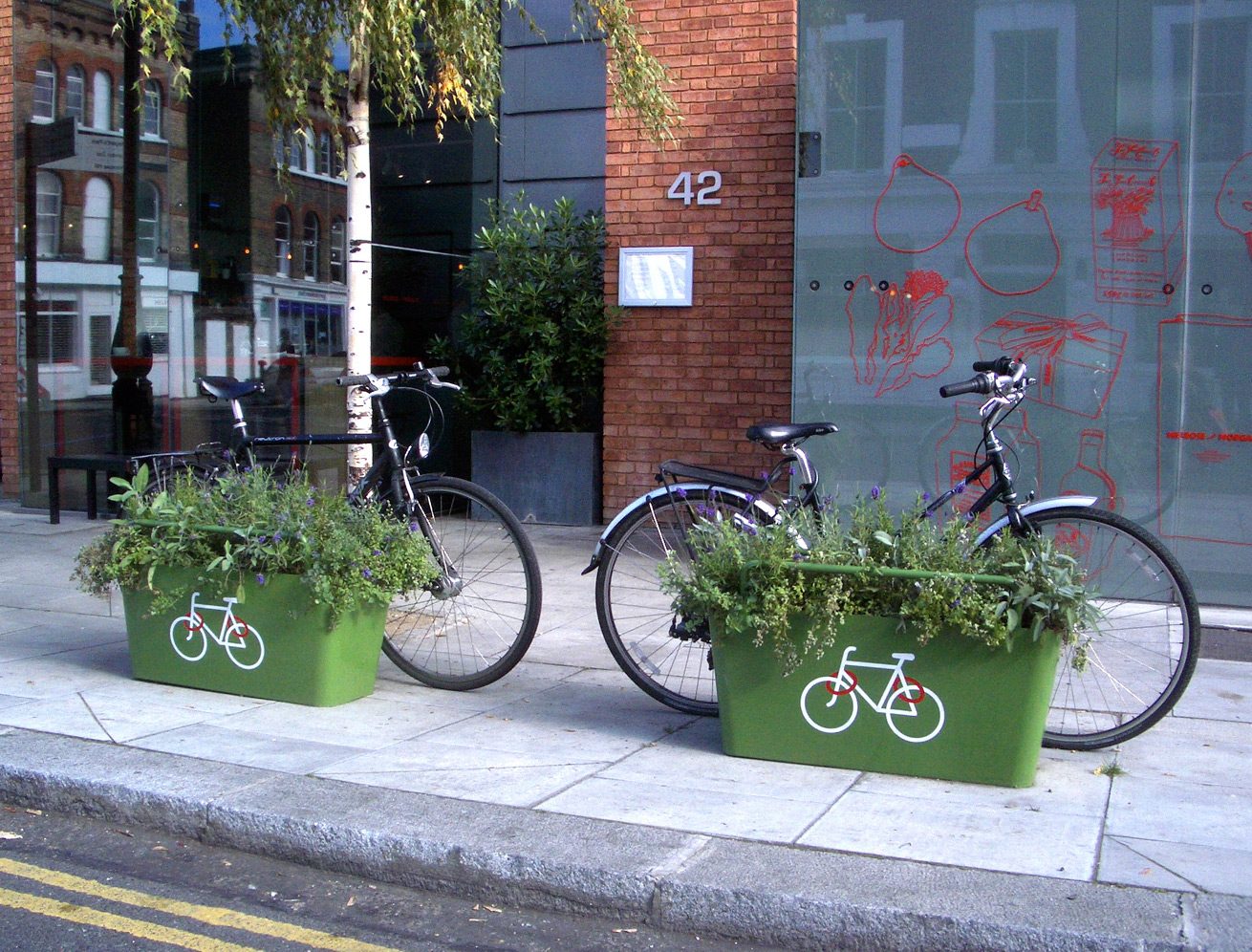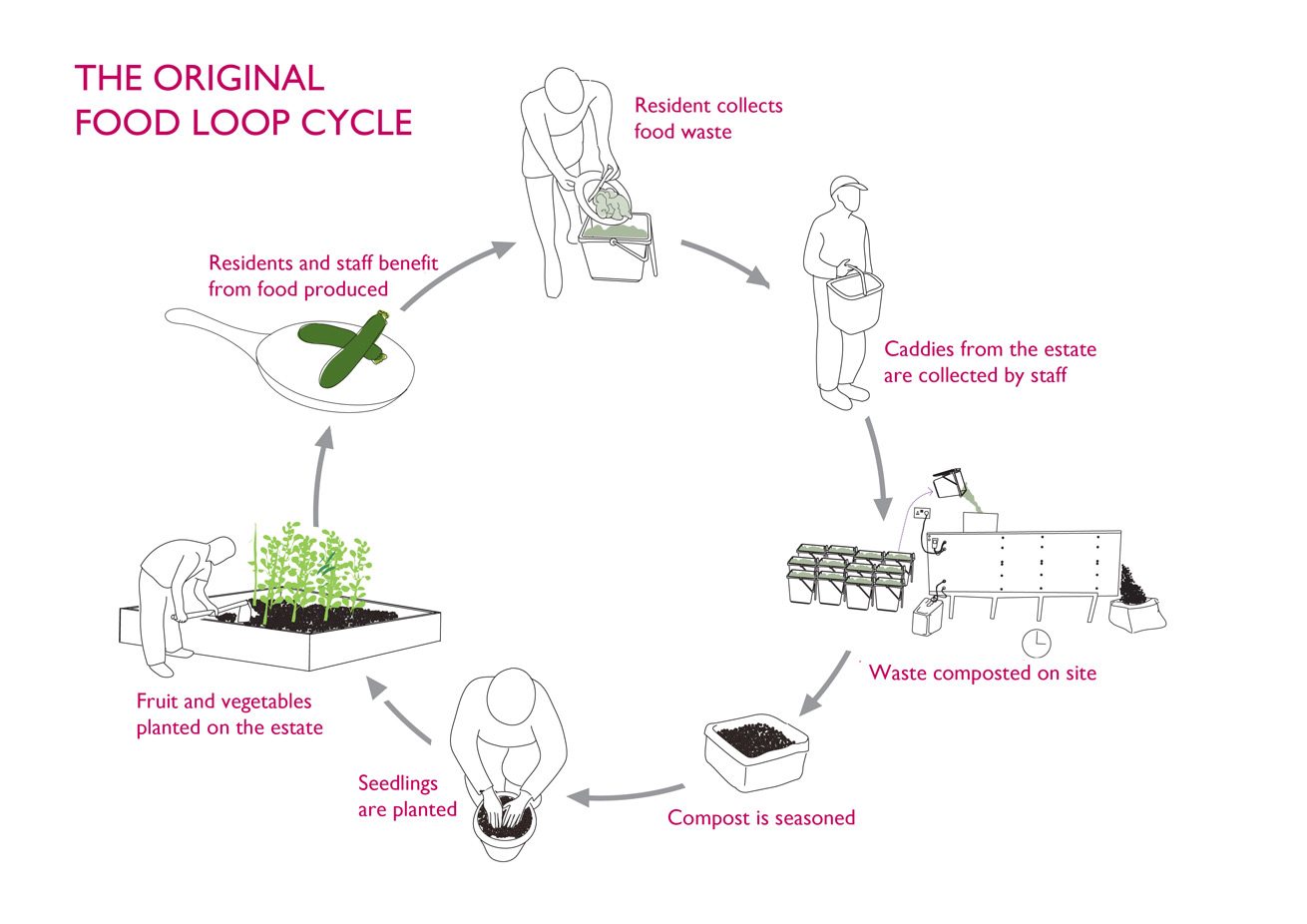Socially Responsive Design
Article by Hannah Jones and Anette Lundebye
Interviewees: Maziar Raein, Adam Thorpe, Clare Brass, Duncan Kramer, Sanneke Duijf, Marco van Hout
Republished from The Dots #5, London Design Festival 2012
What happens when designers shift their focus from satisfying consumer desires, to facilitating new social possibilities? In recent design history, different labels have popped up to describe design research practices that engage with social issues. These include participatory design, service design, transformative design, metadesign and social design. This article explores the notion of socially responsive design, a term coined by design researchers Adam Thorpe and Lorraine Gamman based in the Design Against Crime Research Centre, London, UK. It describes design that makes a social impact, is driven by social issues and delivers social change. Design researchers Hannah Jones and Anette Lundebye attempt to ‘connect the dots’ between a range of socially responsive design approaches taking place in the UK, Netherlands and Norway. They set out to interview six design experts from their network to discover how they define socially responsive design, what it feels like to be involved in this practice; and how it’s likely to impact on design in the future.
What is Socially Responsive Design?
We kicked off our interviews by asking our different design researchers, educators and practitioners if they consider themselves as socially responsive designers and how they understand this term.
Maziar Raein · All design has social consequences. I think the difference between socially responsive design and other kinds of design is that it chooses to actively and consciously engage with these issues. Designers have always had an ethical responsibility but quite often they’ve ignored this, as in the case of Philippe Starck. In my eyes, over the past five or six years there’s been a dramatic increase in younger designers really driven to engage with social issues. As an educator, I believe that socially responsive design has come to the fore because of the death of modernism. Since that dominating ‘grand narrative’ has died and the reaction afterwards of the playful or deconstructive approach has come and gone, there are different ideas, energies and motivations surging through design.
Adam Thorpe · In 1971, Victor Papanek said, “Design has become the most powerful tool with which man shapes his tools and environments (and, by extension, society and himself)”. He proposed that designers who engage with market led activities (that have a negative impact on both society and environment) should contribute either 1/10 of their time or 1/10 of their income to socially responsible projects whilst continuing with their jobs. More recent notions of social design are less dismissive of the market and economic imperatives. Socially responsive design is not oppositional to market considerations but prioritises social considerations over those of the market.
Sanneke Duijf · Socially responsive design is about using social situations as a starting point of an investigation. Rather than being locked in the design studio you need to get your hands dirty in the field. Design should bring about social development and it can act as a force for change. Socially responsive design does this.
Clare Brass · Socially responsive design needs to cover all the three bases, the environmental, the social and the economical. It is about identifying societal and environmental problems, thinking about specific problems in detail but also zooming out to see what other problems might be connected and then to join the dots. The main thing you end up designing is relationships. It’s design with people not for people.
Duncan Kramer · I’m not big on design terms or titles as they rarely reflect my experience of designing, which foremost is collaborative. We most often talk about ‘good work’. It’s not very articulate, but WE know what we mean.
Marco van Hout · I see an increasing interest in socially responsive design within the context of experience-driven design. In fact, I believe they are interdependent and they share the concept of emotion. Emotions are the drivers behind (social) behaviour as well as behind the experiences we have in general. Something that is becoming more important in experience design is the impact of products on people’s general health, well-being and happiness. In the past decade or so, the Internet and developments in mobile technology have completely changed our perspectives of the world and our social environment. Take the recent events in the Middle East for example. It made us feel closer to the people actually fighting for change far, far away and made us feel a shared responsibility.
Can you give us a practical example of socially responsive design?
Each of our experts were asked to come up with examples of socially responsive design from their own practice or inspiring examples from the work of others.
Duncan Kramer · Okay, so if you take PlantLock, to me it’s a piece of political design. I say political because it’s supposed to affect the way people perceive the world around them and how they act. It’s encouraging people to cycle and to grow things in urban areas. These are two activities that have been made difficult because they don’t fit the dominant models. For example, loads of infrastructure is provided for driving and that in turn that creates jobs etc… fuelling a self-perpetuating system. Cycling isn’t like that. It’s a much wilder more elementary thing. It’s hard to control and it’s hard to make money from. Our Green Roof Shelters is an attempt to get real biodiversity-supporting green roofs onto small buildings and structures in the city. It’s a gap the big green roof companies are not interested in. But to us it’s a real opportunity to spread things at a grass roots level.
Sanneke Duijf · I led a group of second year Graphic Design students from AKV | St. Joost Academy as part of a SlowLab research programme in a neighbourhood in Amsterdam. Working in teams, they were developing prototypes for a Slow Loket, a mobile information point to capture the expertise and potential of that area. This was a local platform for interaction and dialogue, a place to share and exchange ideas, obstacles, opportunities, resources and more. The challenge for the students was to find the right strategies to make contact, inform, gather stories and make connections between the Lloyd Hotel – the centre of the project – and the neighbourhood. (www.socialdesignresponse.com/ 2011/10/19/slow-loket/)
Maziar Raein · There are so many things happening at the moment. On our blog we have surveyed a range of examples. I’m inspired by the brilliant Dutch traffic engineer, Hans Monderman who took away the traffic light system. He showed that instead of giving information, you take away information and put responsibility on the road users and this has increased road safety. (www.socialdesignresponse.com/archive/)
Clare Brass · The organisation I set up is called the SEED foundation, which stands for Social Environmental Enterprise with Design. We have been working on a project over the past couple of years called the ‘Food Loop Project’ asking if it is possible to create a design-led enterprise that addresses the issue of food waste in urban environments? We thought that picking food waste would be a big enough problem to generate an income from it. So we tried to design a way of capturing the value of food waste, which is very valuable. It is actually worth right now at least £165 per tonne and this will rise to about £225 per tonne in the next couple of years due to EU legislations. We started looking at people’s attitudes and behaviours towards waste and to services and set about changing people’s perspective on waste. So, it is about helping the community to take ownership of its own waste streams and to turn them into value streams. (http://foodloop.org.uk/)
Marco van Hout · An example that immediately comes to my mind is a prototype concept for an app that we created some years ago called ‘Snapje’. This app engages both parents and children with autism. The Snapje concept has been developed to enable children to get skills in emotion recognition in relation to the context. A parent can take photos of situations that have an emotional meaning. Photos can be taken of familiar people, but also from the child itself. On the one hand it is very useful to learn from emotions of others in relation to the context. On the other hand, it is useful to learn the relation between the context and an emotion through own experiences of the emotion. (www.emotiondiary.com/snapje/)
Adam Thorpe · Designs against crime like the M stand designed by Bikeoff (an initiative of the Design Against Crime Research Centre, University of the Arts London), are the result of thousands of observations of cyclists parking their bikes and over a year of cycle theft research investigating the most secure way of parking to resist common bike theft techniques. The main design driver for the stands was increasing the security of cyclists locking practices to reduce cycle theft and increase cycling. In addressing this societal concern new product innovation was achieved. (www.bikeoff.org/)
What does it feel like to participate in socially responsive design?
We wanted to understand from our interviewees how being involved in socially responsive design is different to traditional design in terms of the emotional feedback from the process.
Sanneke Duijf · Doing socially responsive design feels inclusive. Design is part of our lifestyle and part of the world we live in so therefore we should include this world actively in our design processes. Next to that, it is quite satisfying engaging with users and receive responses from them, to acquire an insight into their situation to empower them to take action.

Sanneke Duijf – Slow Lloyd Parade project, fortune-telling www.socialdesignresponse.com/2011/10/19/slow-loket
Maziar Raein · It feels more meaningful. There is a sense of satisfaction, a sense of learning and a sense of being part of something bigger. It’s also fun and confusing and playful. There is a lot of experimenting that goes wrong. It’s very active, fast and messy. The designer moves from a monologue to a dialogue with other stakeholders and the world around them. What is unnerving for the designer is that aesthetics take a back seat. In graphic design, many young designers now say that they don’t care about style. The issue isn’t about colour or fonts but it’s about the idea behind it, which is unnerving but exciting. It’s about aesthetics serving a concept.
Clare Brass · I’ve always had good fun. Part of the fun has always been working with people, now it’s an even more critical component. When you are doing a traditional design project where a product is at the end of the line, you know where you’re going and what your end role is. But with this kind of work, you know what you want to achieve, but the goalposts are moving all the time, things change. For example, when there was an election everything changed for the food loop project. It’s really scary. The other difficult thing is earning a living with social innovation.
Marco van Hout · Engaging people, making things more pleasurable is one thing, making a change in people’s social context, wellbeing and even happiness is a completely different story and obviously rewarding. I am extra proud that my fellow board member (of the Design & Emotion Society, ed.). Pieter Desmet has initiated the Delft Institute of Positive Design, which aims to stimulate the development of knowledge that supports designers in their attempts to design for happiness, for human flourishing. (http://studiolab.ide.tudelft.nl/diopd/)
Adam Thorpe · Socially responsive design activity feels relevant and contemporary. But it’s not always easy and clear cut. Complex and contradictory might also be relevant descriptors at times. What designers are responsible for are the decisions they make and they should at least understand as much as they can about the likely impacts of their proposals and even consult with those affected by the proposals to try and ensure that their proposals have the desired impacts.
Can you give us a scenario for socially responsive design in 2020?
What kind of futures do our interviews predict for this approach to design?
Maziar Raein · Paola Antonelli said, “In 25 years designers will be at the nexus of things”. More and more design will be focused around social needs (e.g. water). There will be more diversity in design, with designers working alongside business people. There’ll be many more design thinkers. We will be questioning systems and situations. Designers will have to take stronger lines and take more direct stands. The days for the bigger agencies with moral ambivalence will go and we’ll move towards network based, smaller firms with people working together around ideas they share. Because we have become saturated with products around us, my students say, “I’ve got enough things I don’t need more”. They’ve grown up with ‘more’ as teenagers and they now seem to want less and to do more. I think this will spill into the way they work.
Sanneke Duijf · In the future socially responsive design will be an integral part of design education. I think schools are starting to expose students more and more to society by placing projects in real life contexts, often working together with (commercial) businesses but also with governmental institutions. Yet better would be to work more socially. The organisation Design in Society is a good example for that; it’s an interdisciplinary program for students using design strategy as a method to tackle complex urban issues. (www.designinsociety.nl)
Clare Brass · Our traditional economic model doesn’t work and we’re finding it out and it’s painful. I think there’s an appetite, there’s a lot happening here, not only in the design field, there’s a lot happening in every walk of life. There is a spirit of unrest and because we know now much better how the system works and that there is a lot of unfairness, we are in a much better position to change things. I think today’s generation of design schools are starting the ball rolling, people are launching, new principles, new ideas, new concepts and we’re getting there.
Duncan Kramer · Hopefully there will be fewer designers twatting around. There’s so much that needs doing. Everyone should ask more questions of the people living around them. And listen to the answers. For socially useful design to succeed, I sometimes think it’s best for it to find new ways of using existing commercial frameworks. Maybe borrowing the tools of the mainstream and carving a radical niche alongside it.
Marco van Hout · I like the description on the website of the Delft Institute of Positive Design: “Since the industrial revolution, all of our society – our workplaces, homes, transportation, and communication, have increasingly become infused with design… Research has shown that our dishwashers, computers, radios, cars, and other products we are surrounded with, do not make us particularly happy.”
People are increasingly looking for products and services that fulfil life goals that go beyond material wealth and are more valuable for social cohesion, health and general well-being. I believe in the future a lot of designers will want to be part of a group of change-makers. We won’t be designing anymore for the sake of designing, we will only be designing for a purpose, such as meeting real needs. Between now and 2020, it is design’s time to shine. I think socially responsive design and related approaches will have to be leading in this movement. Luckily, I see lots of signals that illustrate exactly that.

Marco van Hout, Snapje Phone App, Copyright 2012, Pascal Karthaus, SusaGroup BV www.emotiondiary.com/snapje
Adam Thorpe · Much of what we perceive as ‘future’ issues are visible in the present. We are preparing for ‘more of the same’ as far as social scenarios to be addressed by design, perhaps with more intensity and urgency. Design scenarios that address issues linked to an ageing population, zero oil scenarios and rising population numbers and increasing population density. The changes in climate and weather will also likely result in changing environmental scenarios.
Conclusion
So to connect the dots, what is socially responsive design? In line with societal changes, we are seeing designers that are forging new roles as facilitators, mediators and change agents. Design thinking is moving out of the box and into the world. Practices are shifting away from previous industrial design models that were primarily market-led towards purpose-led ways of intervening and offering solutions for specific issues. Rather than looking at people as mere passive consumers, they are included as active participants and offered a chance to co-design the lifestyles and livelihoods we want. Design is therefore becoming entangled in the lives of its users and collaborators.
Since context and stakeholders seem to be so central to these design processes, the outcomes might not be so easily recognisable as an Eames chair or a Koolhaas building. It is more likely to be an unassuming community garden, a collaborative toolkit or even an intangible form of collective knowledge. As such, these designs might not necessarily be ‘beautiful’ in a traditional design sense. But as design approaches they enable empathy, belonging, exchange and engagement – all important ingredients for social cohesion. We might therefore say that it’s design that champions the empathetic over iconic. Meeting real needs, being involved in something bigger, feeling that one’s work is meaningful and having fun seem to be strong drivers for socially responsive designers. The question is how can we make this an accessible and viable route for more designers to pursue?
This interview was published in The Dots #5 during the London Design Festival 2012. Read the entire publication here.
















